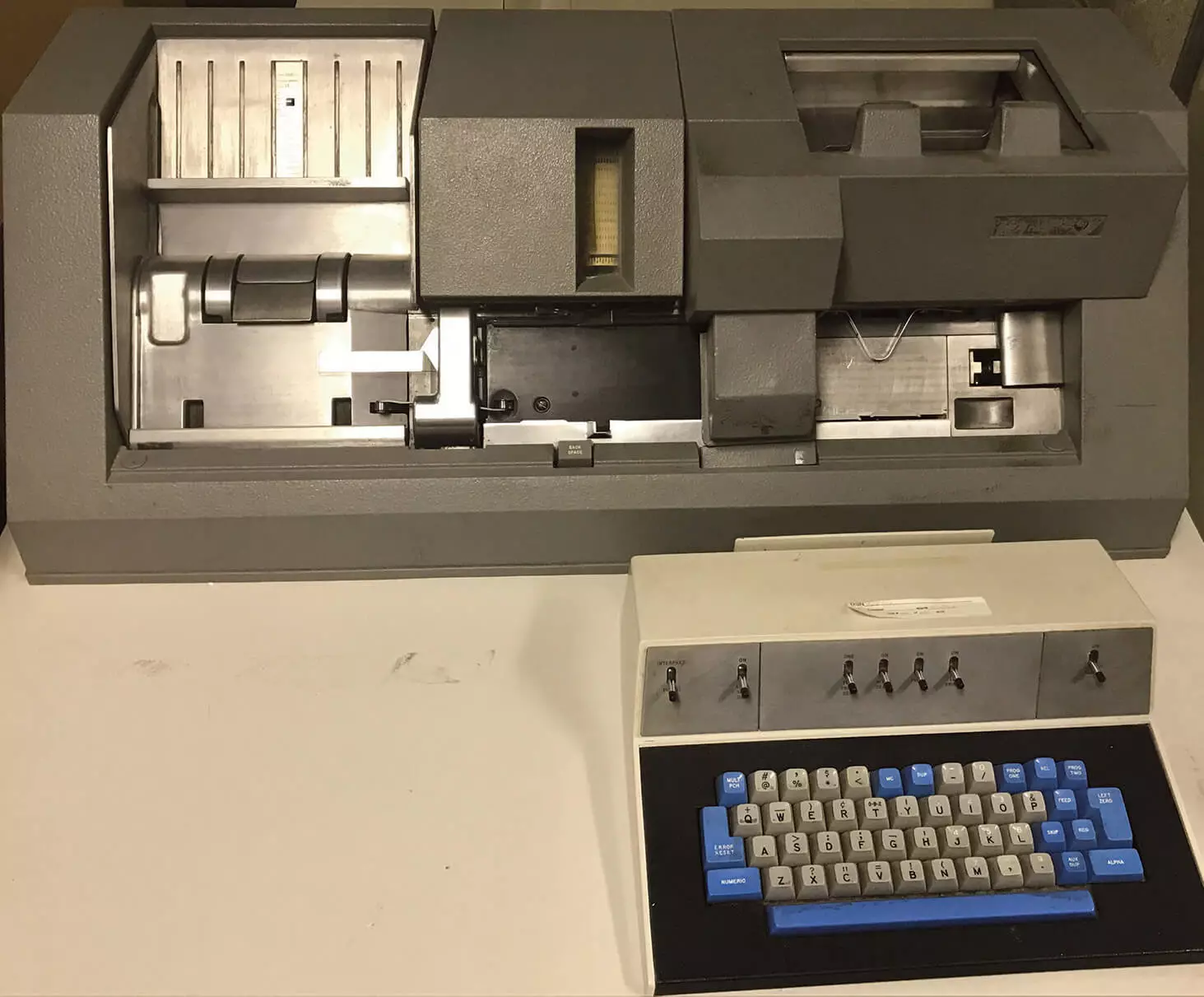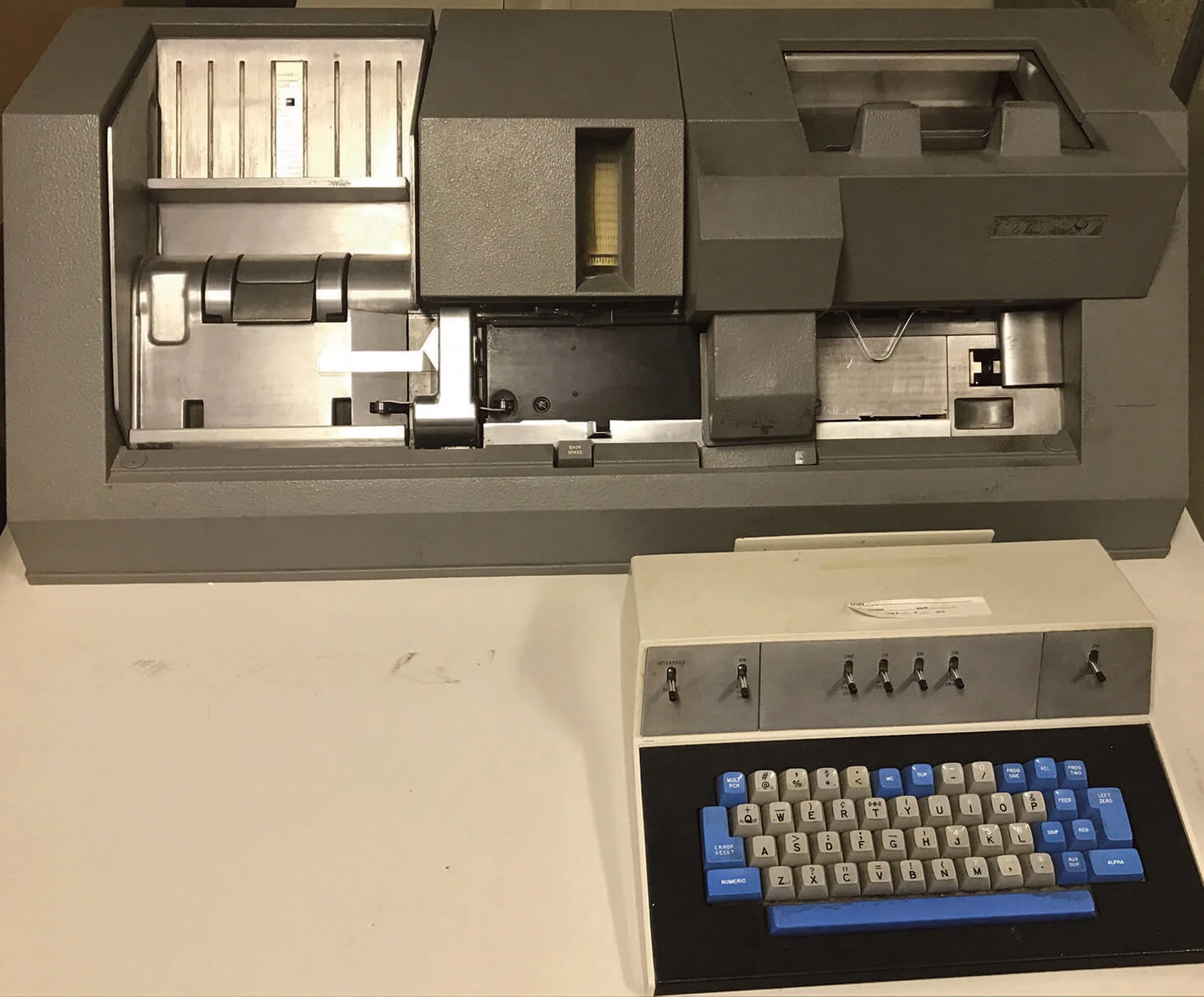Search
Looking for something in particular? Search for it here.
Looking for something in particular? Search for it here.
After World War II, employees at area insurance companies processed more and more policies. The use of new computer technologies enabled these companies to continue to grow, while reducing paperwork.
Featuring:
Sandra Harsher Haas, (1949 – ), keypunch operator
Sandra Harsher Haas (1949- ) started a job as a keypunch operator for Biddle Advertising shortly after she graduated from Bloomington High School in 1967. It was a production job that required fast and accurate typing with a quota that had to be met. Sandra was good at this work, but six months later, when personnel learned she was pregnant with her first child, they let her go.
A month after her son was born, Sandra got part-time work on a short-term project at IAA. When she completed the project, she transferred to a full-time keypunch job in the claims department of Country Companies. Like her first job she typed data into a keypunch machine, which punched small rectangular holes in special cards that were taken to the computer room to be tabulated. She did this work from 1968 to 1972, during which time she advanced to become a verifier — a team member who monitored the quality of work being done by data entry personnel.
Sandra left Country Companies in 1972 when her husband took a job out of state.
But when they returned in 1977, she was soon back at her old job.
Two years later Sandra transferred to Country's claims department. There she became involved in developing and testing a new data entry claims system. She was soon named supervisor of this department, taking on the responsibility of hiring workers and ensuring the quality and quantity of their work. Sandra also dealt with personnel issues. She had good mentors for such situations, but also took classes to improve her management and human relations skills.
Sandra was in a unique position. Unlike many supervisors, she had experience doing the work she supervised and could relate to the difficulties and challenges her workers faced. It made her a better supervisor and a better problem solver.
By the 1990s data entry personnel had computers on their desks, and Sandra was in charge of Country Mutual’s records maintenance department. Her team managed the company’s paper documents and successfully transitioned from preserving these document on microfiche to digitizing individual documents.
Microfiche are small negative films containing tiny photographs of documents. Creating microfiche became a standard practice for preserving company records in the 1940s.
When Country Life considered outsourcing the digitization of its records, Sandra believed she had a better solution. She talked to management about adding Country Life’s digitization needs to her department. Aware of her capabilities, and knowing it would save the company money if she was successful, management agreed to let her try. Sandra and her team succeeded in digitizing the records in-house.
Besides dramatic changes in the use of technology, work culture also changed during the years Sandra worked at Country.
When she started Sandra and her female coworkers were required to wear dresses and hose, while men wore shirts and ties. When they asked her if she smoked, Sandra said yes, so they supplied her with an ash tray. By the time she retired, the dress code for both men and women had relaxed to casual wear, and smoking both inside and outside company buildings had been abolished.
IBM keypunch machine, circa 1965

View this object in Matterport
Sandra and her coworkers would have worked on a keypunch machine, like this one used at State Farm.
Courtesy of: State Farm Mutual Automobile Insurance Company
